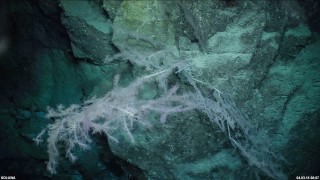
Using high-resolution maps produced by the multi-beam sonar over the last few nights, we were able to explore the first site within the northern section of the Perth Canyon. ROV Comanche dove down to 700 metres (2300 ft) to investigate a steep cliff face that looked promising to find a large variety of deep sea life. And we were not let down…
Surprising life
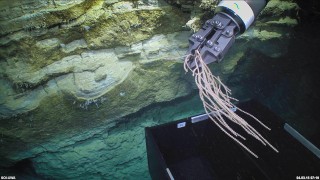
As soon as ROV Comanche approached the seafloor – a large area of soft sediment surrounding the steep cliff, and we were greeted by several deep sea crabs that did not seem to be too disturbed by the ROV lights. We then continued to take a closer look at the steep walls of the cliff and soon found several large anemones. Since it is difficult to estimate the size of these critters on the camera footage, Comanche has two laser beams with a fixed distance of 10 cm (4 in). This enables us to get a better idea of the real size of these deep sea animals.
Light at depth
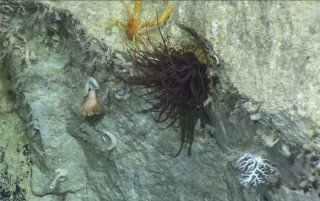
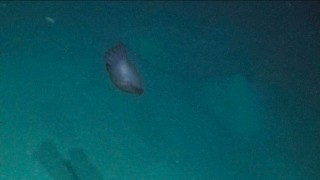
Aside from other invertebrates such as swimming purple sea cucumbers, sea urchins, and feather stars, a variety of deep sea fish crossed our way. Many of these fish have huge eyes, even though they live their entire lives in almost complete darkness. Although this alien world seems void of any light to us, this is not completely true. Many deep sea organisms can produce their own light, a phenomenon called “bioluminescence”, which is used to camouflage their body contours from predators, to lure prey or to communicate with other individuals of the same species. The evolution of huge eyes, which can be up to 100 times more sensitive to light than human eyes, helps deep sea fish to detect bioluminescence and any traces of light that may reach the shallower zones of the deep sea.
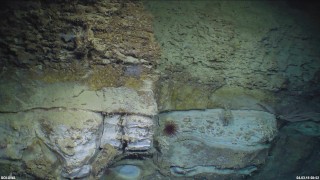
The true highlight of this first dive into Perth Canyon, however, was the discovery of several deep sea corals. Not only did we find soft corals swinging gently in the current, but also hard corals, which are of particular interest to scientists due to the environmental information that is archived within their skeletons. ROV Comanche successfully collected two specimens with its manipulator and they are now being preserved for later scientific analysis. The team is looking forward to many more successful dives to come over the next days.


